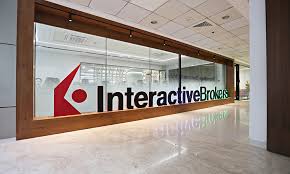The missing link
“What is Liquidity Management? Most of us are familiar with those terms separately, but I can assure you 99% of the retail FX marketplace, including the brokers, tech providers, and EA masterminds, have little if no idea what those two words mean when you group them together” – Kevin Murcko, CEO, FXPIG

By Kevin Murcko, CEO, FXPIG
If you spend or waste, any amount of time on the big three forex trading stat websites, you will see that the majority of systems that tend to look profitable are problematic in the fact that they never perform the same across different pricing venues. This ‘anomaly’ can be due to either the toxic nature of the systems themselves or the simple fact that pricing in FX is varied and each venue prices differently.
Here in lies a reality that most traders are simply unaware of; finding a profitable strategy is step one and probably the EASIER of the two steps needed to see consistent profitability. Step two, unfortunately, is something you, as the trader, cannot control, and even worse it is something that most brokers have no idea how to tackle. I am speaking here about Liquidity Management.

What is Liquidity Management? Most of us are familiar with those terms separately, but I can assure you 99% of the retail FX marketplace, including the brokers, tech providers, and EA masterminds, have little if no idea what those two words mean when you group them together.
Let’s be honest with one another, at the end of the day, regardless of the broker you pick to clear your trades that order flow will find it’s way to the same small handful of FX banks that control the retail FX industry.
In other words; all brokers are peddling the same wares. To make things even worse most, if not all brokers use the same technology, technology they outsource to another company, meaning that normally they have limited knowledge of how that technology works or how the various parameters affect their clients trading.
I am sure you have seen how one system can operate ‘well’ with one broker and do nothing but lose money at another. Now, some nefarious brokers simply warehouse all trades and give their clients, at lease initially, instant order execution. However for the sake of argument let’s assume, or rather let’s dream, for this article, that all brokers are STP. Why then, or rather HOW can a system perform so differently between different pricing venues? It’s a simple answer with a complicated explanation, and it comes down to;
‘Configurations’
What do you think would happen if we increased the standing idle on a 1987 Yugo 55 to 7000 RPMs? Or what if we took a shiny new Ferrari 488 Spider, but say we set that to 10 RPM? Moreover, just for fun let’s put some jet fuel in our beloved Yugo and some of Grandpa’s moonshine in that junky Italian eye sore.
I think it’s a safe bet to say that neither is going to get very far… and we might see some fireworks… however, be mindful of the shrapnel.
My point is that even if you are trading the perfect system if the settings on all sides are not optimized, then you might as well be phoning in your trades to a deaf dealing desk.
A trader with a high-frequency system cannot expect optimum results trading on the same configurations as a carry trader who focuses on exotics and crosses.
Let me give you one example; Trader A is in and out of the market in under 500ms on average, trading mostly majors, trade sizes max out at 500k per execution, and all trades take place during the NY session. Trader B is working with mostly crosses, an average deal size of 10M and he trades 24/5. These two setups could not be any more different.
Trader A needs to be sure that he is not facing any last look liquidity; that is step one. He also needs to know the average top of book each provider is pricing on the pairs he trades.
It is also VERY beneficial that he works with buy and sell side vendors so that he can be assured no single bank is taking both sides of his trades. As he needs to be able to fill and receive rejections swiftly, so he needs a ‘time in force’ setting that guarantees him one attempt at the price he wants and either a quick rejection or a fill.
Trader B needs a more robust aggregated top of book on the exotics and crosses he trades, but he also needs more time to fill a position, thus a larger ‘time in force’ inside the central aggregation can ensure that he gets the maximum fill percentage possible. For him, waiting 3 to 5 seconds to ensure higher fills and better overall VWAP price is essential.
Now this is just the tip of the iceberg as they say, but hopefully, you get my point. Liquidity Management and in part, order routing rulesets, are paramount to long lasting success in this market.
The next time you approach a broker make sure you know what to ask for. If they don’t manage their own tech infrastructure, well, it may be time to look elsewhere.









